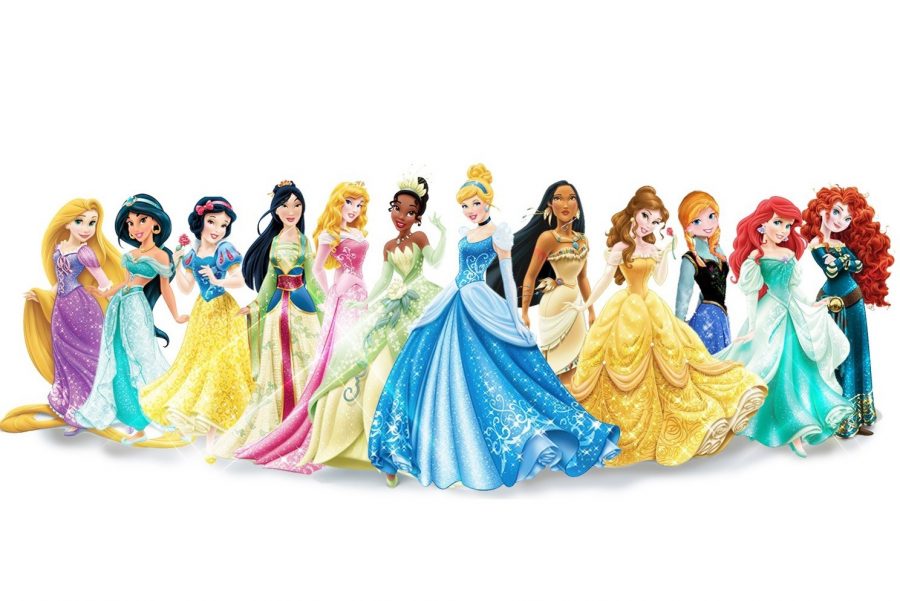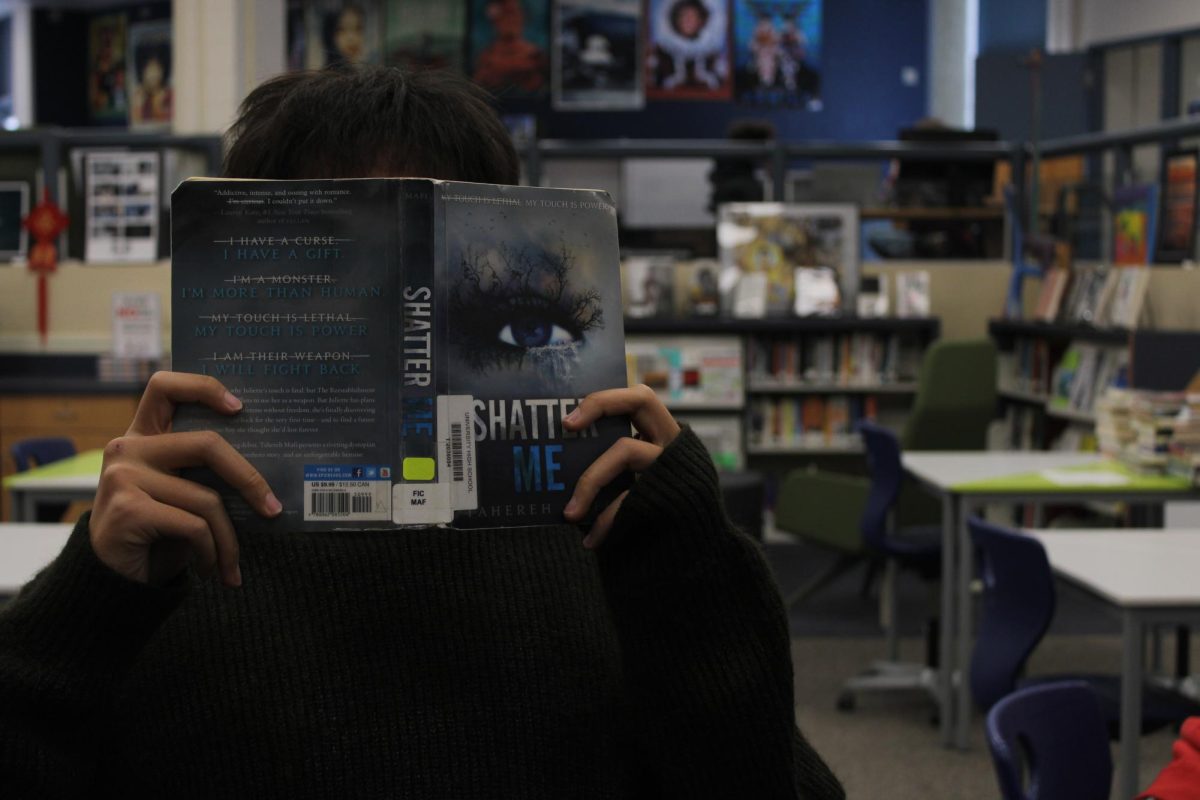
By AKANKSHA SAH
Staff Writer
Since Disney’s redesign of its Disney Princess Line in 2013, the company has received a considerable amount of backlash from outraged fans, producers and parents. This controversy, however, does not simply center on the redesign as critics have constantly attacked Disney for its line of princesses even before 2013.
These critics have mainly been parents who feel that Disney’s princesses and the movies they are featured in have affected their young girls in a negative way. These parents claim that, taking into account the different body types and general “attractiveness” of the princesses, it is clear that Disney values only skinny bodies and outer beauty, resulting in low self-esteem and body images in the minds of young girls who look up to these princesses. Their claims, however, lack any substance; these kinds of influences are everywhere – most toys, from Barbie dolls to superhero action figures, have an unrealistically ideal body, and the issue of self-esteem is simply not the companies’ problem. These companies’ purposes are to make profits, not to help children with body image, and it is a ridiculous notion to expect them to try to focus on the latter as their main concern.
Furthermore, the most important aspect of Disney princesses is not their bodies but rather their stunning personalities and the essential message within each of their stories. For example, let us look at Cinderella, who teaches us to retain kindness through hardship or Mulan, who teaches us that honor and sacrifice are just as important for women as they are for men; or how about Belle from “Beauty and the Beast,” whose singular, most important message is that one should look past outer appearances and appreciate the true beauty within a person, as she does with the Beast?
If a child actually looks past the messages in each movie and instead focuses on the bodies of the princesses, there is no limit to what will be a negative influence on her. Disney princesses will be the least of her concerns in a world where supermodels are flashing mile-long legs and celebrities are wearing see-through dresses. Every form of media nowadays is filled with beautiful, skinny women who have been Photoshopped and airbrushed to accentuate their natural beauty; magazines, advertisements, movies and television shows are just some of these sources.
Suite Life of Zack and CodyThe effects of Disney Princesses on girls’ self-esteem have been blown grossly out of proportion, especially considering all of the different places in which the same body types are prevalent and admired. If it is considered acceptable for pretty, skinny actresses to be on Nickelodeon and Disney shows like the
Victorious,
Zoey 101,
H2O,
iCarlyand
, then why is it not acceptable for an animated character catered towards a similar age group to be similarly attractive and thin?
If Disney princesses are having a negative effect on girls’ self-esteem, the problem is the responsibility of these children’s parents, not Disney. To fight the problem, parents must help their children understand the positive messages in Disney movies to reinforce positive body image and value in their children.
Therefore Disney princesses themselves are not a problem. Unfortunately, the redesign from 2013 is. Each of Disney’s princesses was altered in some way, some more blatantly than others. Common factors among all of the redesigns include the addition of glitter and the modernization of hairstyles and dresses. These particular changes are somewhat acceptable – while fans of the classics may be upset over the deviation from the original looks of the princesses they grew up with as role models, Disney’s characters are marketed towards young children who do not remember or never grew as attached to the original characters. Therefore, the changes meant to modernize the princesses are justified, as they were made to help the princesses address a new generation, just as Mickey Mouse, My Little Pony and hundreds of other beloved characters have been changed over the years in order to appeal to modern generations.
PocahontasThe unacceptable changes, however, are the ones that have either changed the features of or sexualized the characters. Most of the princesses, especially those of color, have had their skin lightened by one or more shades, as shown by the changes made to
Jasmine,
Mulanand
Tiana, among others. Furthermore, many characters have had their eyes widened, their face shapes changed subtly and, as made most obvious by
‘s transformation, their noses made smaller and more “European-looking.” With this Europeanization of the princesses, Disney’s considerable progress in representing different ethnicities, including Middle Eastern, Chinese, Native American and African American, is undermined. The message Disney is sending is that even characters who were created as paragons of beauty of other ethnicities would be better and more beautiful if they were European.
BelleAdditionally, the sexualization of certain characters, especially prominent in the redesigns of
Meridaand
The Guardian, gives the message that women who show more skin or have longer hair are more desirable. Belle has suddenly attained long, sultry locks that flow down her back, as opposed to her original just-past-the-shoulder length hair and Merida has been put in a sexualized version of the dress she expressly despised in the movie. Merida’s creators from Pixar expressed their disapproval of Disney’s changes to their fiery, defiant character as soon as her design was revealed; the changes sparked such an outrage amongst parents and Merida’s creators that they banded together and sent Disney a petition – one that the company could not ignore. Disney responded by explaining that the design was only meant to be shown once, as Disney often creates special designs for certain limited-time product lines, according to
. Nevertheless, Disney has not yet officially shown how Merida will be depicted in future lineups with the rest of the princesses.
The Week,As a whole, the controversy surrounding Disney is unfounded in some aspects but based on common logic in others. According to
runsPsychotherapist Mary Finucane said that her three-year-old daughter “stopped running and jumping because princesses didn’t do those things. That was about the time [Finucane] stopped waiting for the phase to pass — when she stopped running.” This claim is simply ridiculous, and it begs the question: “Has she been watching the same Disney princess movies as the rest of us?” Every single Disney princess runs, jumps, dances or swims at multiple points in the movies – Cinderella loses her slipper as she
flipsdown the palace steps, Ariel
jumping, dancing, walk[ing]around in the water, singing of how she cannot wait to get legs for “
run[ning], [and]
climbs,” Mulan
sledsa wooden pole and
rundown a snowy mountain, Pocahontas sings of how she likes to “
hoppingthe hidden pine trails of the forest” and Tiana turns into a frog, a creature that literally can only travel on land by
. There is, however, a chance that children like Finucane’s daughter may feel negatively influenced by the changes in the princesses’ appearances as a result of the redesign.
Taking all of the facts into account, Disney’s portrayal of characters and their actions has fit and changed with the social norms of the times that each was created in, and the movies portray nothing but good lessons and morals. Unlike other companies like Barbie and Marvel that rarely make popular dolls or superheroes with non-European ethnicities, Disney has always been among the first to include a broad range of cultures in its movies. However, with the redesign, Disney has undermined the significance of its cultural representation and, thus, the beloved company seems to have taken two steps forward and one step backward.














